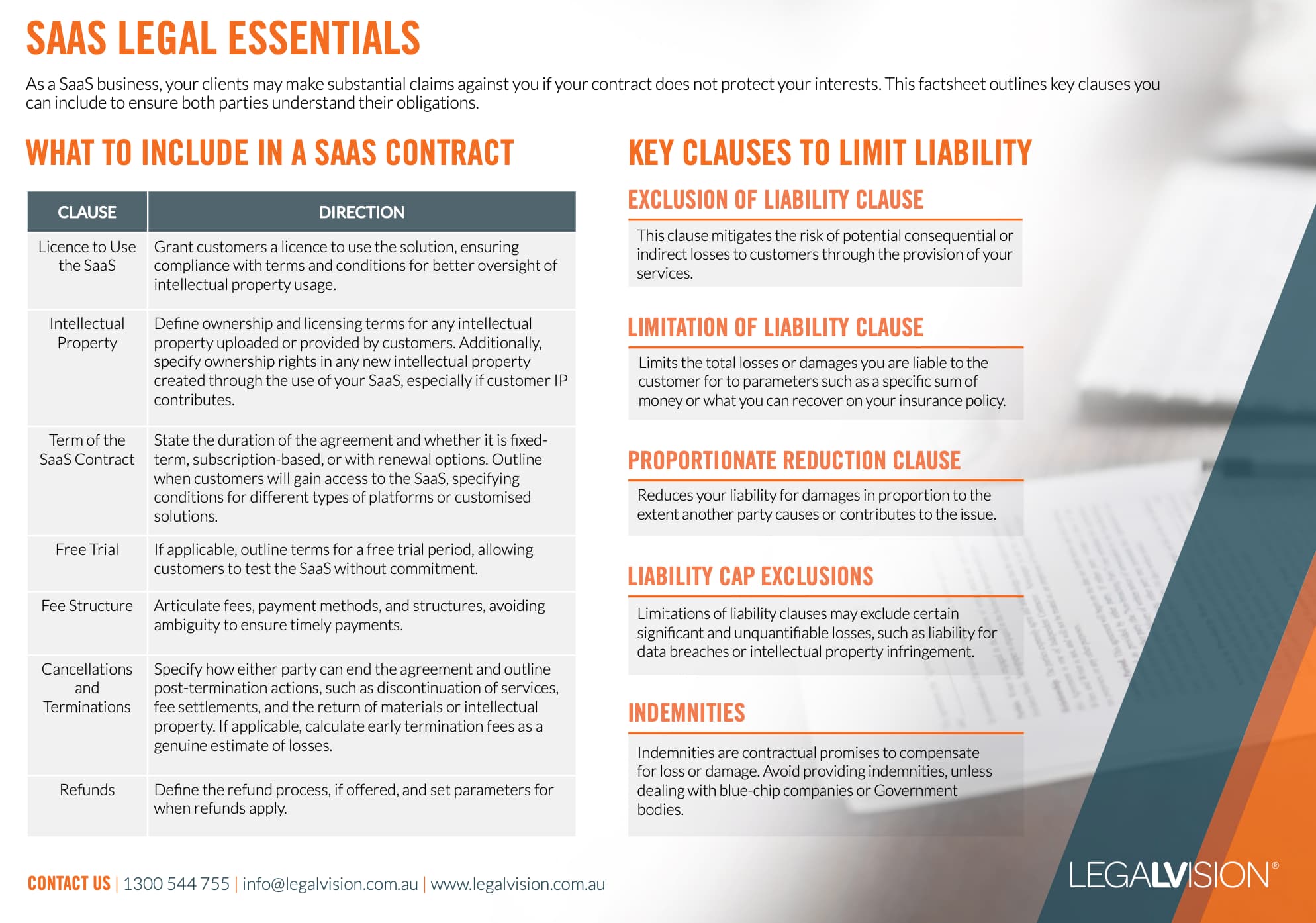In Short
- ‘Termination for convenience’ allows a party to end a contract early without a reason, potentially causing financial and operational issues.
- Valid notice is crucial for termination; contracts should specify procedures for notice, fees and transition activities.
- Proactive planning and clear contractual clauses can help mitigate disputes related to termination.
Tips for Businesses
To avoid disputes over termination for convenience, establish clear contract terms, including transition plans and early termination fees. Regularly review contracts and maintain detailed communication records. Consider exit strategies when drafting contracts and include a clear dispute resolution process. Consult legal professionals as needed to protect your business interests effectively.
As a managed IT service provider, you may have contracts that allow for ‘termination for convenience’. A ‘termination for convenience’ clause is a provision that allows for a party (usually the larger entity or service provider) to terminate a contract early without providing a reason. This means they can terminate without proving that the other party did anything wrong. While these clauses can provide businesses with valuable flexibility in managing their IT partnerships, they frequently become points of conflict. When a customer wants to terminate for convenience, it can be a material issue for your balance sheet and projected revenue if you have made initial investments with the expectation of full payment. This article will explain the process, considerations, and steps you can take when a dispute about termination for convenience arises.
Is There a Valid Termination?
If a dispute over termination for convenience arises, one of the first things a court will look at is whether the relevant party provided notice in accordance with the prescribed termination procedures in the contract.
Generally, a valid termination notice requires a party to:
- provide an express written intention to terminate the contract;
- identify the clause in the contract that allows them to issue the termination notice and exercise the right to terminate;
- identify the date on which the termination will have effect;
- correctly calculate and adhere to any relevant notice period;
- pay any early termination fee; and
- adhere to any prescribed wind-down or offboarding procedures, including data-transition protocols.
Are There Other Issues Due to the Termination?
While the validity of the contract termination is often a primary concern, numerous other issues and disputes can arise.
This includes, for example, disputes about:
- the financial implications for both parties, which is a very common issue;
- calculating termination payments;
- recovering unrecovered investments;
- treating work in progress;
- valuing stranded assets;
- the quantum of transition costs; and
- any breach of related obligations.
The terminating party’s conduct during the termination process may also give rise to separate grounds for dispute, such as:
- breach of confidentiality obligations and/or interfering with the service provider’s business relationships;
- failure to provide reasonable transition assistance;
- non-payment of undisputed amounts; and
- breach of data handling obligations.
Example
For example, a common question asked by clients who are IT service providers is “If the client has provided a termination notice or refuses to make payments under the contract, can we ‘turn off’ the services?”.
Some contracts provide for notice periods to wind up the business arrangement after a client provides a termination notice. You may still be obligated to continue providing services during that period.

As a SaaS business, your clients may make substantial claims against you if your contract does not protect your interests. This factsheet outlines key clauses you can include to ensure both parties understand their obligations.
How Do I Mitigate My Risk Proactively?
You can mitigate the risk of termination disputes by implementing robust preventative measures from the outset of the business relationship.
When negotiating and drafting the initial contract, you should proactively consider exit planning rather than deal with it once issues and disputes materialise. It can be helpful to include contract clauses like:
- any financial obligations or compensation, such as early termination fees, that may be due on termination;
- detailed schedules outlining the specific steps, responsibilities and timeframes for service transition or non-performance of these transition services; and
- a clear dispute resolution process in your contract to assist with dealing with any termination or other types of disputes when they arise.
It can also be beneficial to conduct periodic contract reviews, maintain detailed records of all communications and issues during the contract term and consult with a legal professional as necessary.
Early Termination Fees
The financial implications of early termination often form the core of disputes between managed IT service providers and their clients.
Contracts should define if there are any early termination fees and how they are calculated. Generally, early termination fees must represent a genuine pre-estimate of the loss to your business from the termination rather than an unreasonable amount in the form of a penalty for terminating the contract.
Australian courts have found that contract terms deemed penalties are unenforceable regardless of how they are described in the contract. Termination fees may be deemed penalties and, therefore, unenforceable if they are:
- extravagant;
- unconscionable; or
- disproportionate to the legitimate interests of the party seeking to enforce them.
Transition Procedures
You should also be aware of and plan for transition procedures. Critical aspects of a managed IT service agreement, such as data migration, system handover and knowledge transfer, should be clearly defined and regularly tested.
Other inclusions you may consider for a transition procedure will depend on your specific service arrangement but can include:
- clear timelines and milestones for transition activities;
- an explicit scope of transition assistance requirements;
- data migration and system cutover protocols;
- documentation requirements and knowledge transfer processes;
- intellectual property (IP) and asset ownership, including identifying pre-existing and newly developed IP, physical assets and software licenses;
- treatment of customised configurations and modifications;
- access rights to shared platforms and infrastructure; and
- third-party license transfer obligations and restrictions.
Establishing clear processes can significantly reduce the likelihood and scope of disputes when termination occurs.
Key Takeaways
Often when one party terminates a contract for convenience, there are many other issues that can arise as a result. Unless a valid termination notice has been given, the contract may still be in force. You should review the specific termination provisions in your contract or also speak with a lawyer to determine if the other party is still bound by their rights and obligations.
If you are involved in a dispute over termination for convenience, our experienced disputes and litigation lawyers can assist you as part of our LegalVision membership. For a low monthly fee, you will have unlimited access to lawyers to answer your questions and draft and review your documents. Call us today on 1300 544 755 or visit our membership page.
Frequently Asked Questions
Providers can mitigate risks by negotiating clear exit planning, defining financial obligations like termination fees, and establishing transition procedures. Regular contract reviews and maintaining detailed records are crucial. A clear dispute resolution process can also help manage issues effectively and preserve client relationships.
Firstly, review the contract’s termination provisions to ensure compliance with notice requirements and any early termination fees. Assess any additional issues, such as confidentiality breaches or failure to provide transition assistance. Seeking legal advice can further clarify obligations and rights in such disputes.
We appreciate your feedback – your submission has been successfully received.











